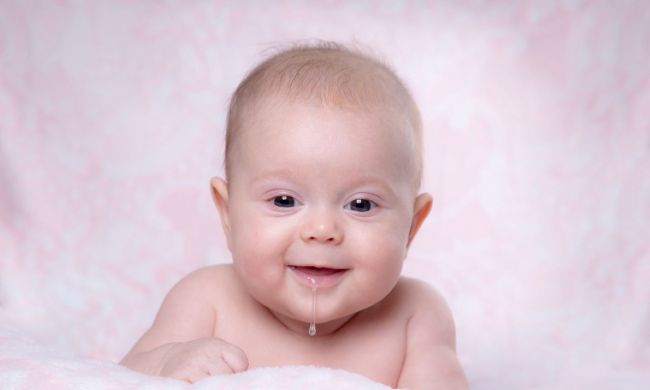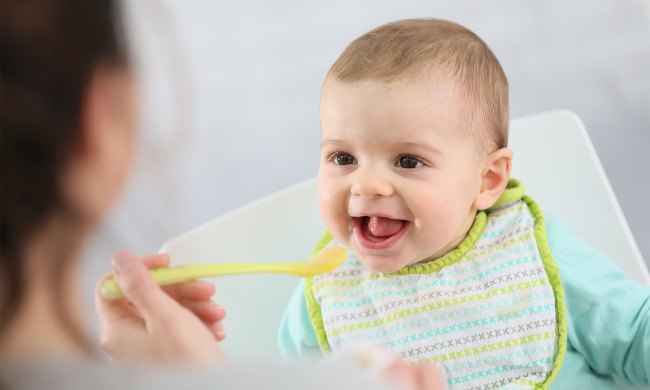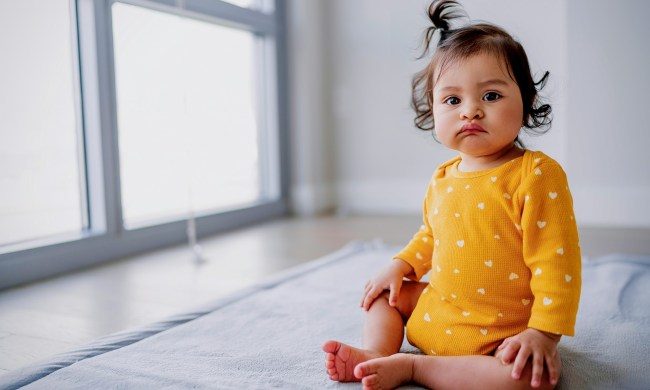
Pacifiers are a part of most babies’ lives and will likely also be a part of your baby’s life. If you’re a parent who prefers not to give your infant bottles or breastfeed at bedtime (or if you’re weaning them from nighttime feeding), then pacifiers are even more likely.
But know that some babies don’t like pacifiers no matter what shape they are or what type of sweetener you may put on them. However, for most infants, they are favorite soothing devices that are acceptable until between ages 2 and 4 when parents are encouraged to wean their babies from pacifiers to avoid possible dental problems.
So if you want to try one out, which is the best for your baby? We did a little digging and found some great options for you. Let’s get started.
Philips Avent Soothie Pacifier
The #1 favorite among doctors, parents, and personal friends we surveyed, hands down, is this pacifier. The Avent Soothie pacifier made by Philips is the most frequently distributed in hospitals nationwide, recommended by the most medical professionals, and is made of hospital-grade, BPA-free, latex-free silicone. These pacifiers are orthodontic, which means they’re created to stay aligned with babies’ natural mouth development, and their solid, one-piece construction keeps things simple and makes them easy for little ones to grasp.
Toss them in the dishwasher or sterilize as you wish. Pay attention to the sizes listed on packages before you purchase to make sure you’re buying the right one for your baby. Get a Philips Avent Soothie 0-3 months, green, 2-pack here for less than $7.
WubbaNub Elephant Pacifier

If your baby won’t take the Avent Soothie on its own, they might take it with this friendly plush elephant attached for a hug. You’ll find hospital NICUs and other baby units throughout the U.S. giving out these pacifiers. Also free of BPA, PVC, latex, and phthalate, the cuddly WubbaNub Elephant Pacifier comes in a patented one-piece format, which is easy for babies to grab. The pacifier itself is made of only medical-grade silicone.
This one is best for babies aged birth to 6 months and it isn’t recommended for infants during periods of teething. Keep it clean by washing the pacifier with warm, soapy water, and spot-clean the elephant with a warm sponge. If you need a more thorough washing, toss it into a mesh laundry bag and wash it in the washing machine, but remember to keep it on the gentle cycle.
Get your baby a WubbaNub Elephant Pacifier here for $17. (Prefer something other than an elephant? The company also has WubbaNub Giraffe Pacifiers, as well as Moose, Monkeys, Puppies, and more.)
Ryan and Rose Cutie PAT Pacifier

For babies who have started teething (or you anticipate them starting soon), this simple pacifier/teether combo should do the trick! There are options available with this brand, depending on your child’s oral development.
Get a stage 1 Cutie PAT if your baby doesn’t have teeth yet. Stage 2 Cutie PATs are for babies with teeth already, or those currently teething. Both stages offer a perfect paci, free of latex, phthalates, BPA, and PVC, and the nipple is naturally shaped to feel similar to the breast, so breastfed babies can easily adjust. FDA approved and comprising 100% medical-grade silicone, these pacifiers can be sanitized or cleaned in the dishwasher for added convenience. You can also attach it to pacifier clips that are CPSIA compliant.
These are available in 19 colors — grab a few if you’ve got outfits for special occasions to match! You can also choose a flat nipple pacifier or a starter kit, which contains a stage 1 and stage 2 pacifier and a flat, slant, and bulb nipple pacifier. Get your Ryan and Rose Cutie PAT Pacifier, stage 1 here for $12.
BIBS BPA-Free Natural Rubber Baby Pacifier

Originally created by the BIBS company in Esbjerg, Denmark 40 years ago, these classic pacifiers are among the most popular 100% natural rubber pacifiers on the modern-day globe. Some may have an engraved or raised logo of the company along the pacifier’s ring. Excellent for weaning from breastfeeding, these pacis have 100% rubber nipples, and are super soft to touch — a reminder of the mother’s skin as babies relax and fall asleep. As you may have guessed, these are also free of phthalates, PVC, and BPA.
These are available in packs of 2 for babies anywhere from 0 to 36 months old, and there are rubber and silicone options. Colors are quite extensive and include, but are not limited to, iron, lilac, mustard, ruby, steel, black, coral, and more. Get your BIBS BPA-Free Natural Rubber Baby Pacifiers (2-pack; hunter green, best for ages 0-6 months) here for $16.
(Previous customers expressed these are worth the extra spend, especially for parents having trouble weaning from breastfeeding or having trouble taking a paci at all).
Tommee Tippee Symmetrical Design Moda Baby Pacifier

Another stylish option, these BPA-free pacifiers are designed to encourage baby acceptance (and it works — babies who have refused many other brands will take a paci from Tommee Tippee!) and have symmetrical reversible nipples to help babies get them into their mouths.
Made by Tommee Tippee, originally from the U.K., with growing popularity in the U.S., these are available in a wide array of attractive designs and may vary with each order. Choose whether you’d prefer a set for babies aged 0-6 months or for 6-18 months. Get your Tommee Tippee Symmetrical Design Moda Baby Pacifier, 0-6 months, 4-count here for $12.50.
There are a few to start off with, so go ahead and select one based on your baby’s age and preferences, as well as your design and color combination tastes. Some parents find their child resists the pacifier at first, especially if they’ve grown accustomed to breastfeeding, but don’t lose hope — there are at least two options above designed to solve that exact problem! We read many reviews stating they did just that, too.



